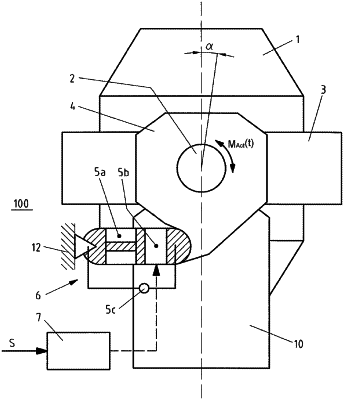| CPC C21C 5/464 (2013.01) [C21C 5/4673 (2013.01); F27B 3/12 (2013.01)] | 16 Claims |

|
1. A method for operating a converter that is mounted in a gear mechanism by supporting journals so that the converter is tiltable about longitudinal axes of the supporting journals and rotatably coupled with the gear mechanism, the converter and the gear mechanism being permanently supported on a foundation by a torque support, the torque support being a hydraulic cylinder with a connected servo valve or an electromechanical drive, the method, in a blowing mode of the converter, comprising:
controlling a time-variable actual torque MAct exerted on the gear mechanism by the converter to a specified setpoint torque MSet, the step of controlling the torque comprising the following substeps:
measuring the time-variable actual torque MAct exerted on the gear mechanism by the converter;
specifying the setpoint torque MSet;
determining a torque system deviation as a difference between the setpoint torque MSet and the actual torque MAct;
generating, by a first control device, a first component of an adjusting signal for the torque support as an adjusting element in accordance with the torque system deviation; and
activating the torque support with the adjusting signal so that the torque system deviation becomes zero.
|